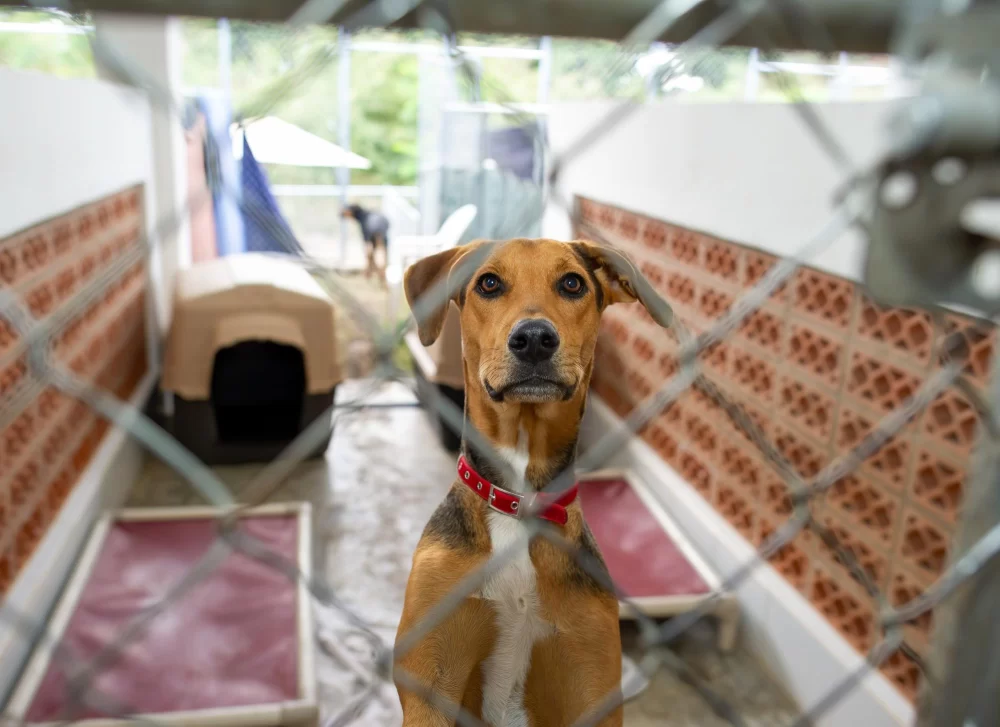- understanding-the-challenges-of-socializing-a-rescue-dog
- building-trust-and-creating-a-safe-environment
- step-by-step-process-of-socializing-adopted-dogs
- real-case-stories-lessons-learned-in-rescue-dog-socialization
- professional-support-and-finding-the-best-resources
1. Understanding the Challenges of Socializing a Rescue Dog
Bringing home a rescue dog is an act of compassion, but it also presents unique challenges. Many adopted dogs come from uncertain backgrounds, sometimes with limited exposure to the outside world. Fear, anxiety, and even distrust can be common hurdles during the early days. Learning how to socialize a rescue dog requires patience and empathy, as every dog’s journey is different.
Some dogs may have never walked on a leash, met new people, or interacted with other animals. It’s not unusual for shy rescue dogs to hide under furniture or flinch at unfamiliar sounds. Understanding these behaviors is the first step to guiding your dog toward a happier, more social life. Each small step in rescue dog socialization makes a big difference over time.
2. Building Trust and Creating a Safe Environment
Trust forms the foundation for all successful socializing adopted dogs. Before introducing new experiences, create a home environment where your dog feels secure. Set up a quiet retreat—like a cozy crate or a peaceful corner—where your rescue can relax undisturbed. Familiarity is comforting, so keeping routines predictable helps build a sense of safety.
Building trust with rescue dogs often starts with simple gestures: speaking softly, moving calmly, and offering treats or toys as positive reinforcement. Remember, never force interactions—allow your dog to approach at their own pace. If your dog is particularly shy, you might notice progress in subtle ways, such as making eye contact, wagging their tail, or showing curiosity during walks.
The experts at Hidden Brook Veterinary emphasize that patience is vital. Socialization is not a race, and every dog needs time to heal and adapt. Reassurance and consistency will help your rescue dog feel safe as you start their journey of discovery.
3. Step-by-Step Process of Socializing Adopted Dogs
The process of how to socialize a rescue dog can be broken down into manageable steps. Start with brief, low-pressure introductions—like sitting quietly together or walking in a calm area. As confidence grows, gradually introduce new people, gentle dogs, and everyday sounds. If your rescue seems anxious, take a step back and give them time to adjust.
For some dogs, interactive toys or scent games can be a gentle way to build curiosity. Training sessions focused on basic cues (like sit, stay, and come) using positive reinforcement create structure and boost your dog’s confidence. Over time, visiting parks, pet-friendly stores, or even outdoor cafes can provide new experiences in a controlled way.
One often overlooked aspect is body language. Learning to read your dog’s signals—such as licking lips, yawning, or turning away—helps you know when to pause and when to try again later. Many dog owners find that slow and steady wins the race when it comes to helping shy rescue dogs adjust.
4. Real Case Stories & Lessons Learned in Rescue Dog Socialization
Every rescue dog’s story is different, and hearing from others who have walked this path can be reassuring. Take the example of “Bailey,” a border collie mix who was rescued after years in a rural shelter. At first, Bailey froze at the sound of traffic and avoided strangers. With months of gentle introductions, positive rewards, and support from a local vet, Bailey slowly began to greet neighbors on daily walks.
Online communities are full of similar stories: dogs once considered “hopelessly shy” now thriving in loving homes. One dog lover shared how scent-based games helped her anxious rescue feel more comfortable outside, while another found that adopting a calm, confident canine companion sped up her new dog’s socialization. These lessons highlight the importance of flexibility and creativity in socializing adopted dogs.
Remember, setbacks are normal. There will be days when progress stalls, but celebrating every small victory—whether it’s a tail wag or a relaxed walk—builds both your confidence and your dog’s.
5. Professional Support and Finding the Best Resources
Sometimes, rescue dog socialization calls for extra support. Don’t hesitate to consult a veterinarian or dog behaviorist if you encounter persistent fear or aggression. Professionals can design tailored plans for helping shy rescue dogs overcome challenges safely.
At Hidden Brook Veterinary, our experienced team provides expert advice on everything from basic obedience to complex behavior modification. If you’re seeking the best products, training tools, or even specialized classes for your adopted dog, we’re here to help you find solutions that fit your situation.
Above all, remember that learning how to socialize a rescue dog is an ongoing journey. With the right mix of patience, guidance, and support, you’ll help your new companion discover the joys of trust and connection—one step at a time.











